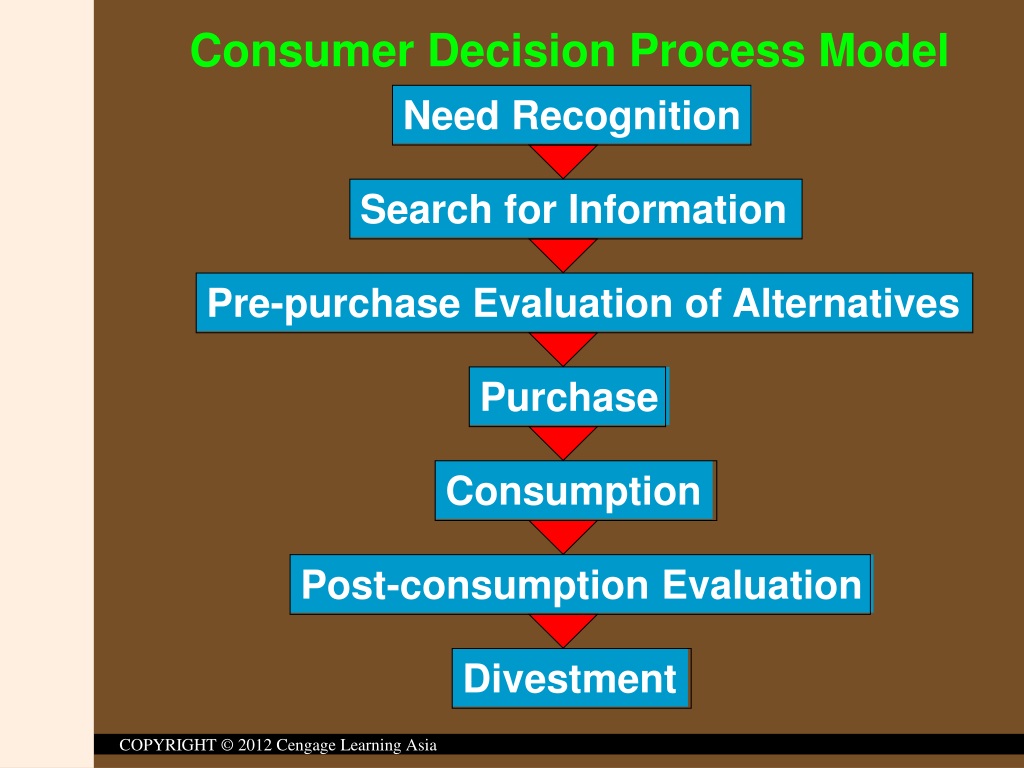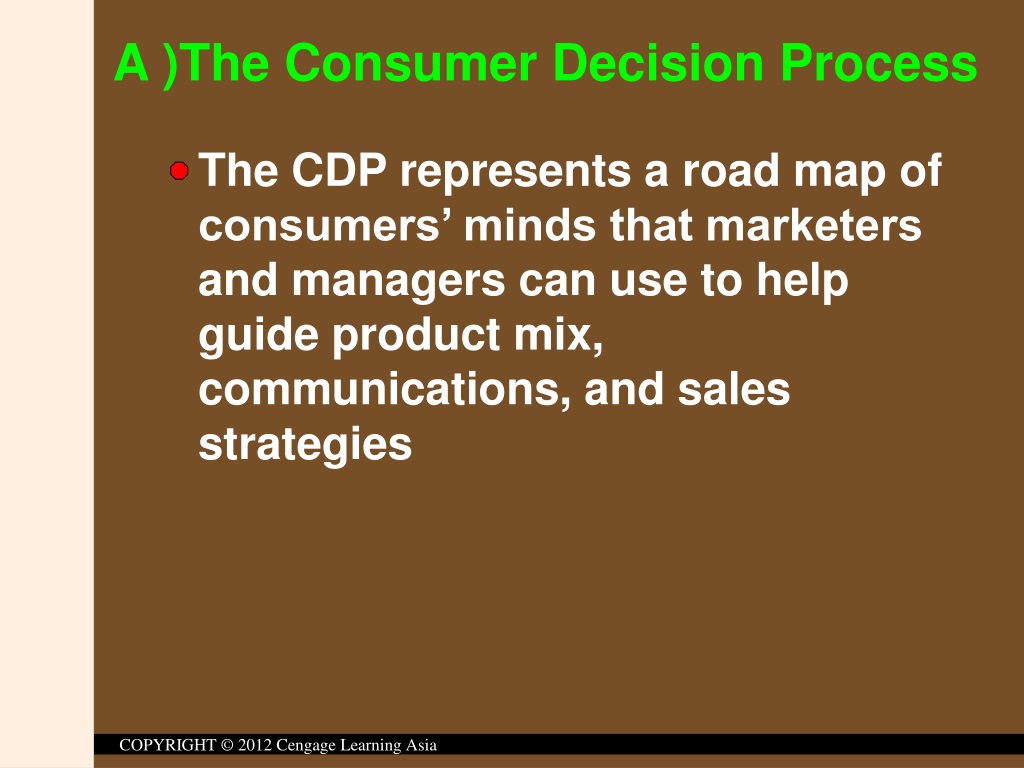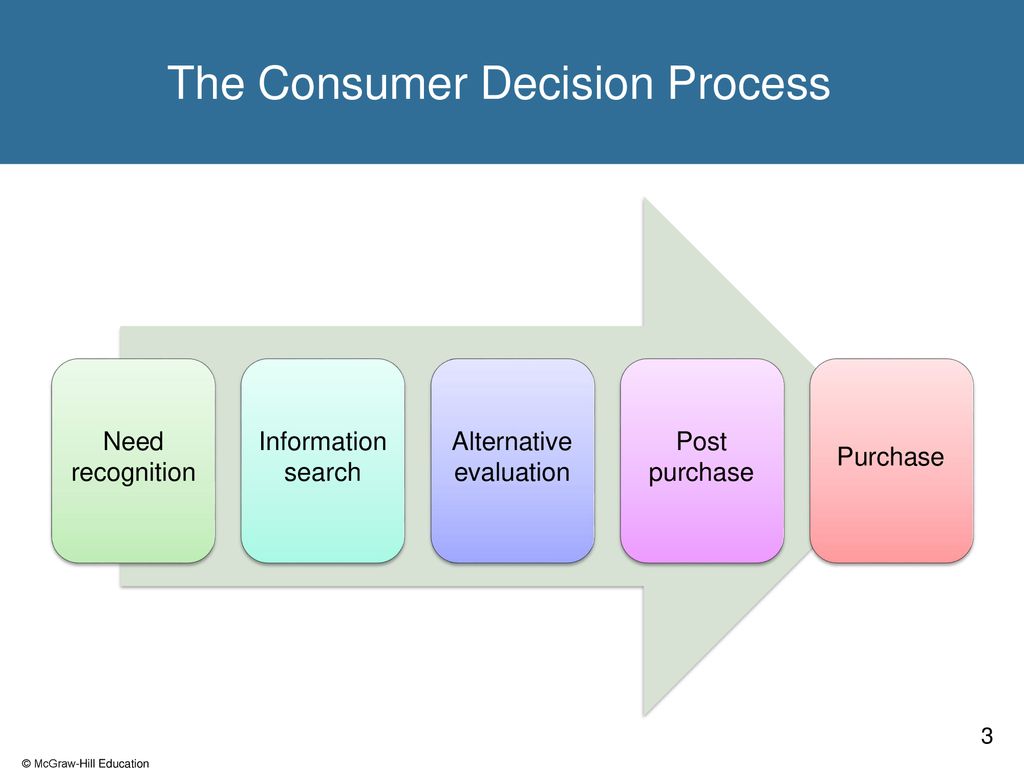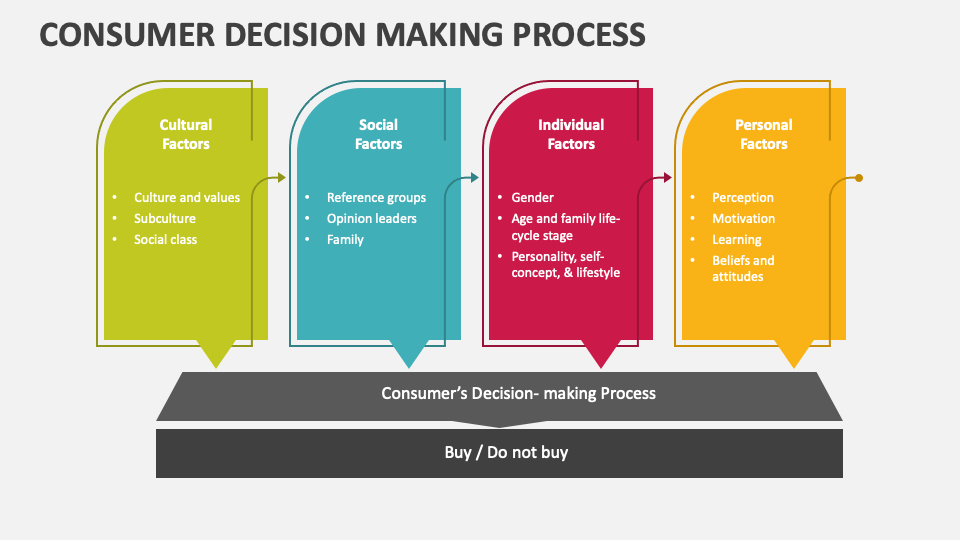The Consumer Decision Process Model Represents

In today's fiercely competitive marketplace, understanding how consumers make decisions is no longer a luxury but a fundamental necessity for businesses striving to thrive. Millions of dollars are poured into marketing campaigns, product development, and customer service initiatives, all predicated on assumptions about consumer behavior. But what if these assumptions are flawed? What if companies are missing crucial steps in the intricate journey a consumer takes before making a purchase?
The answer lies in the Consumer Decision Process Model, a framework that maps out the stages a consumer typically goes through when making a purchase. This model, while seemingly straightforward, is a powerful tool that allows businesses to dissect consumer behavior, identify key touchpoints, and tailor their strategies for maximum impact. Ignoring this model can lead to wasted resources, ineffective marketing, and ultimately, lost sales.
Understanding the Consumer Decision Process Model
The Consumer Decision Process Model is a conceptual framework that outlines the various stages a consumer experiences from the initial awareness of a need or want to the post-purchase evaluation of the product or service.
It's a roadmap that helps businesses understand how consumers think, feel, and behave throughout the buying process, enabling them to strategically influence decisions and build stronger customer relationships. While the specific stages may vary slightly depending on the complexity of the purchase, the core elements remain consistent.
The Five Stages: A Detailed Breakdown
The most commonly accepted version of the model includes five key stages: need recognition, information search, evaluation of alternatives, purchase decision, and post-purchase behavior.
Each stage presents unique opportunities and challenges for businesses to engage with consumers and guide them toward a favorable outcome.
Need Recognition: This is the starting point, where the consumer identifies a problem or need. This need can be triggered by internal stimuli (e.g., hunger, thirst) or external stimuli (e.g., advertising, observing a friend's new purchase).
Companies can influence this stage by highlighting problems consumers might not even be aware of or by creating a desire for something new.
Information Search: Once a need is recognized, consumers typically seek information to address it. This search can be internal (recalling past experiences) or external (consulting online reviews, asking friends, visiting stores).
The internet has dramatically altered this stage, giving consumers access to an unprecedented amount of information at their fingertips.
Evaluation of Alternatives: With information in hand, consumers evaluate different options based on various criteria, such as price, quality, features, and brand reputation.
This stage involves comparing and contrasting alternatives to determine the best fit for their needs and preferences. Businesses can influence this stage by providing clear, concise information about their products and services, highlighting their competitive advantages.
Purchase Decision: After evaluating alternatives, the consumer makes a purchase decision. However, this decision can be influenced by factors such as availability, pricing, and the opinions of others.
Even after deciding on a specific product, unforeseen circumstances can lead to a change of heart at the last minute. Ensuring a seamless and convenient purchasing experience is crucial at this stage.
Post-Purchase Behavior: The consumer's journey doesn't end with the purchase. Post-purchase behavior includes evaluating the product or service and determining whether it met their expectations.
This stage is crucial for building customer loyalty and generating positive word-of-mouth. Negative post-purchase experiences can lead to returns, complaints, and damage to the brand's reputation.
The Model's Implications for Marketing Strategies
The Consumer Decision Process Model provides a valuable framework for developing targeted marketing strategies. By understanding the specific challenges and opportunities at each stage, businesses can tailor their messaging and tactics to effectively engage with consumers.
For example, a company might focus on creating awareness and generating demand during the need recognition stage through advertising and social media campaigns. During the information search stage, they might optimize their website and online content to provide detailed product information and address customer inquiries.
Furthermore, the model allows businesses to identify potential pain points in the consumer journey and develop solutions to address them. For example, if consumers are struggling to evaluate alternatives, the company might provide comparison charts, product demos, or customer testimonials to help them make a more informed decision.
By focusing on delivering value at each stage of the process, businesses can build stronger relationships with consumers and increase the likelihood of repeat purchases.
Criticisms and Limitations of the Model
While the Consumer Decision Process Model is a widely used and valuable tool, it is not without its limitations. One criticism is that it assumes a linear, rational decision-making process, which may not always be the case in reality.
Consumers often make impulsive purchases based on emotions or social influences, bypassing some of the stages outlined in the model. Moreover, the model may not adequately capture the complexity of decision-making in situations involving high-involvement purchases or complex products.
Another limitation is that the model focuses primarily on individual decision-making and doesn't fully account for the influence of social networks, cultural norms, and other contextual factors. However, despite these limitations, the model remains a valuable starting point for understanding consumer behavior and developing effective marketing strategies.
It serves as a useful framework for organizing thoughts and identifying key areas of focus, even if it doesn't perfectly capture the nuances of every consumer decision.
Looking Ahead: Adapting to the Evolving Consumer Landscape
The consumer landscape is constantly evolving, driven by technological advancements, changing demographics, and shifting cultural values. To remain competitive, businesses must adapt their strategies and approaches to meet the changing needs and expectations of consumers. Staying up-to-date with marketing trends and consumer insights will be vital for leveraging the Consumer Decision Process Model for years to come.
The increasing importance of online channels, the rise of social media, and the growing demand for personalized experiences are all factors that are reshaping the consumer decision-making process. By embracing these changes and incorporating them into their understanding of the Consumer Decision Process Model, businesses can position themselves for long-term success.
Ultimately, the Consumer Decision Process Model is not a static blueprint but a dynamic framework that must be continuously refined and adapted to reflect the ever-changing realities of the marketplace. Businesses that invest in understanding their customers and leveraging the model to improve their marketing strategies will be best positioned to thrive in the years ahead.














.jpg)


